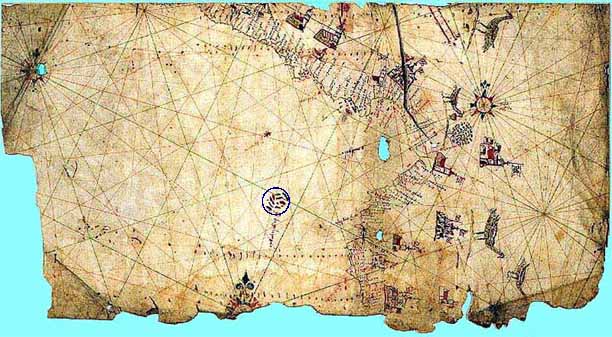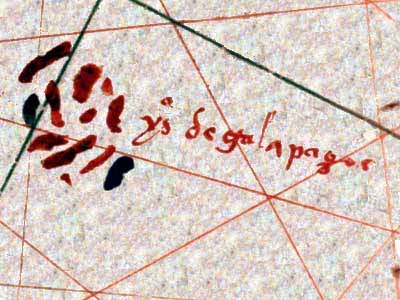ANCIENT VELLUM MAP
Vellum (from the Old English word for which is fine parchment prepared from the skin of lamb or calf. It is rendered white and used for writing upon, and for binding books. Cartographers would use it especially for charts to be used at sea as it resisted water better than paper and was less prone to degradation. Today vellum is rarely used for maps, although it is sometimes used on expensive books. |
Click below to see the image and information on the vellum map:
vellum map
Galapagos on the vellum map
VELLUM MAP
Click image to return to gallery
This ancient chart (unknown cartographer) is drawn on vellum. The map depicts the coastline of western Central
America and northern South America and clearly shows the Galapagos archipelago (blue circle—see below for detail of vellum map), correctly located, off the coast of South America. Said
to date from 1530, this may be the oldest known map depicting the islands. However, since the islands were not
officially discovered until 1535, the map may be from a later date. Alternatively, the Galapagos may have been
added after their existence was reported. |
GALAPAGOS ON THE VELLUM MAP
Click image to return to gallery
A close look at the 1530 vellum map shows the Galapagos Islands clearly labelled. Although they are inaccurately drawn, they are in the correct location and the spelling of the name ('galapagos') is the same as we use today, even though later maps show some variation on the spelling. For example, Ortelius uses 'galepegos' and 'galopegos'. (See Ortelius 1574 map.) |
Learn more about the vellum map
next maps
|
|---|


